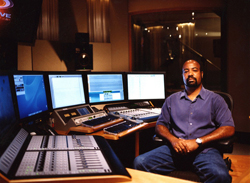
Audio post houses looking to ensure the highest delivery standards for broadcast work might want to check out Dolby's LM100 Broadcast Loudness Meter. Introduced a little over two years ago, the LM100 is a single rack-unit solution that measures the subjective loudness of program dialogue, presenting results in a numerical format. This simple-to-assess value helps to eliminate the variations that take place among operators interpreting traditional VU meters or PPM indicators, neither of which are designed to measure loudness.
Many broadcasters require a program's dialog normalization meta data be set correctly. The LM100 can help a post house meet those requirements prior to delivery.

According to Jeff Riedmiller, Dolby's broadcast product manager, the LM100 uses a custom algorithm that focuses on a program's dialogue by tracking the syllabic rate and pause count that is common to speech.
"We spent quite a bit of time developing the algorithm," says Riedmiller. "Integrating that into the measurement process was another hurdle."
Riedmiller says the LM100 has a 94 percent accuracy rate in detecting speech.

David Jaunai, sound design/mixer at Creative Group in New York, regularly uses the LM100 on work for the In Demand HD channel.
"My main client is In Demand and they have specs for how they want things set up," he says, noting the dialogue normalization, or "dialnorm," has to be within a certain range.
"The client determined they want between -29 and -26," says Jaunai of the dialnorm. "I pretty much put all my mixes at -26." By using the LM100 in the "infinite" mode, he is able to look at the long-term dialnorm level. A short-term setting allows operators to look at levels in a moving :10 window.
Priced at $3,200, the LM100 is available in two configurations. The LM100-LTC can log to external timecode, allowing users to monitor specifically where spikes in dialogue are taking place. LM100-NTSC additionally measures NTSC CATV and off-air signals.